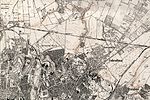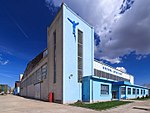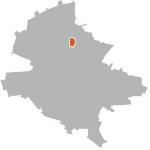UpGround
UpGround is a condominium located in Bucharest at the intersection of Barbu Văcărescu and Fabrica de Glucoză streets and Şoseaua Petricani. The project consists of four buildings, two residential and two office with a total floor area of 226,000 square metres (2,430,000 sq ft). The two residential buildings have 16 floors each and include a number of 600 apartments and have a floor area of 126,000 m2 (1,360,000 sq ft). The project also includes the seven floor class A office building BOC Tower. The tower has a gross leasable area (GLA) of 57,000 m2 (610,000 sq ft) making it the largest office building in Romania. The most important tenants are Banca Românească which occupies 15,000 m2 (160,000 sq ft) and GfK with 2,730 m2 (29,400 sq ft).In May 2008 the project was bought by RREEF Real Estate, the real estate branch of Deutsche Bank for €340 million making it the largest real estate transaction in Romania.
Excerpt from the Wikipedia article UpGround (License: CC BY-SA 3.0, Authors).UpGround
Aleea München, Bucharest
Geographical coordinates (GPS) Address Nearby Places Show on map
Geographical coordinates (GPS)
| Latitude | Longitude |
|---|---|
| N 44.479728 ° | E 26.114781 ° |
Address
BOB Tower
Aleea München
020339 Bucharest (Sector 2)
Romania
Open on Google Maps







